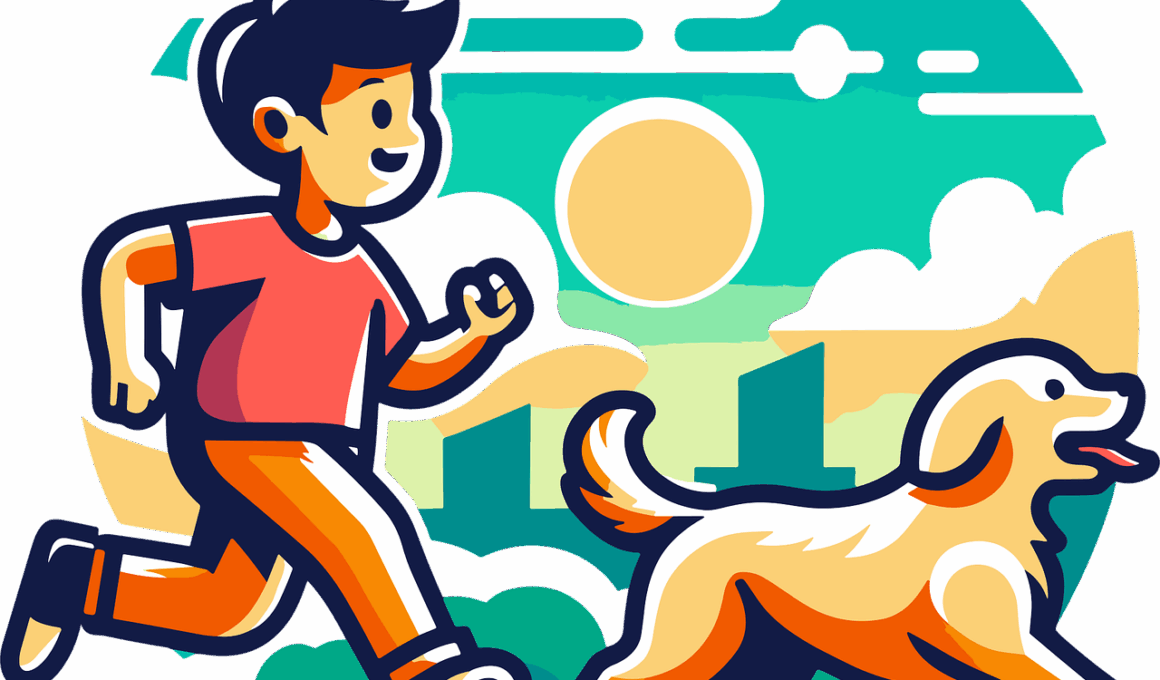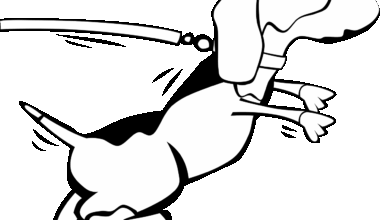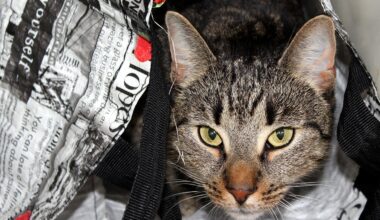Creating a Puppy Exercise Routine That Works
Establishing a structured exercise routine for your puppy is crucial for their physical and mental well-being. Just like humans, puppies require regular exercise to stay healthy. This not only helps them to build strong muscles and maintain a healthy weight but also aids in behavioral training. Start by assessing your puppy’s breed, age, and energy level to create a tailored routine. For example, high-energy breeds such as Border Collies might need more vigorous activities compared to calmer breeds. Incorporate a mix of activities that can stimulate your puppy’s mind, such as puzzle toys and agility courses. Daily walks, playtime in the yard, and socialization with other dogs can make workouts enjoyable. Always remember that over-exercising a puppy can lead to injuries, so gradually increase exercise intensity. Scheduling regular exercise not only helps establish healthy habits but also strengthens your bond with your puppy. Keep it fun and exciting, varying the routine often to maintain interest. Consult with a veterinarian for personalized recommendations to ensure your puppy’s exercise routine is safe and effective.
Understanding Your Puppy's Needs
Every puppy is unique, and understanding their specific exercise needs is essential for creating an effective routine. Most puppies have bursts of energy followed by periods of rest. Observe your pup’s activity levels and find out what types of exercises they enjoy the most. Some may prefer chasing a ball, while others may love tug-of-war or running alongside you. Consider the age of your puppy; younger puppies require shorter bursts of activity compared to adult dogs. Puppies aged between eight weeks to six months typically need around five minutes of exercise per month of age, capped at twice daily. Balance physical exercise with mental stimulation. Regular short training sessions can tire them out mentally and reinforce good behavior. Provide toys that promote chewing, chasing, or solving. Incorporating interactive games can keep your puppy engaged and entertained. When puppies are adequately stimulated, they are less likely to engage in undesirable behaviors. Ensure you adapt the exercise routine as your puppy grows to prevent boredom and encourage continuous development.
Puppies thrive in structured environments, making it beneficial to have a set exercise schedule. Begin by setting a consistent time each day dedicated to exercise. This helps your puppy learn when they can expect activity and helps them build anticipation. Start with leisurely walks around your neighborhood to establish routine. Over time, slowly incorporate higher energy activities such as running in a park or fetch sessions. During these outings, focus on positive reinforcement to associate exercise with enjoying quality time together. Changing environments can also keep your puppy stimulated. Take them to new parks or provide an opportunity to socialize with other dogs. Ensure that you have some toys or treats available to make the experience engaging. Keep a lookout for your puppy’s fatigue signs. Puppies generally indicate when they are tired and need to rest. Provide water before, during, and after exercise, especially on warmer days. After the exercise session, incorporating a cool-down period allows them to gradually lower their heart rate. Make exercising a positive experience, reinforcing behaviors that contribute to a happy and healthy puppy.
Benefits of Early Socialization
Socialization is an important aspect of a puppy’s exercise routine and emotional health. Introducing your puppy to various situations, people, and animals while they are young helps them develop confidence and a well-rounded personality. Early socialization is best achieved through carefully supervised interactions with other dogs and people. Take your puppy to dog parks, puppy classes, or even organized pet events to expose them to new experiences. Regular socialization is particularly important for breeds that can become overly protective or anxious. It teaches your puppy appropriate behavior through play and interaction with other dogs. Additionally, engaging with different people and other pets makes your pup more adaptable to new experiences and situations. Positive experiences in social settings contribute to their overall development and reduce the risk of fear-based behaviors later in life. While exercising, ensure that encounters are positive. Always monitor interactions and step in if play becomes too rough. Creating a habit of exposure to new environments, sounds, smells, and surfaces provides a strong foundation for a happy and confident dog.
Incorporating diverse activities into your puppy’s exercise routine helps keep them physically and mentally fit. Activities can vary from short, playful bursts to more engaged tasks. For example, you could teach your puppy to jump through hoops, navigate an obstacle course, or practice fetch with a twist by adding commands to fetch specific items. Diversification fosters curiosity and encourages them to think critically. On rainy days or when using a time constraint, indoor activities such as hide-and-seek or treat scavenger hunts can substitute outdoor exercise. Keep a selection of toys available, regularly rotating them to keep your pup interested. You can also explore dog sports such as agility or flyball, which provide both exercise and mental stimulation. Engaging in activities together strengthens the bond between you and your puppy. Ensure activities remain fun by following their lead; if they show disinterest, switch to something else. Adapting your methods according to your puppy’s interests can sustain their motivation and excitement while maintaining a healthy exercise routine. No single approach fits all, so be creative in finding what captivates your furry friend.
Safety Precautions during Exercise
Safety is paramount when establishing an exercise routine for your puppy. Start by ensuring that all areas designated for exercise are safe and free from hazards. Watch for signs of excessive fatigue, and always adjust the intensity and duration of exercise to match your puppy’s energy levels. Keep in mind that vaccines are important for the health of your puppy, especially before exposing them to areas frequented by other animals. Maintain a leash during outdoor activities to ensure your pup does not wander into unsafe situations. Invest in appropriate gear, such as a sturdy collar and comfortable harness to facilitate control during walks and play. Always have water easily accessible, allowing your puppy to hydrate when needed. In hotter temperatures, consider exercising during cooler parts of the day to prevent heat exhaustion. Protect their paws from hot asphalt or rough terrains that could cause injuries. Regular veterinary check-ups and assessments will keep you informed of any particular exercise limitations based on your puppy’s health status. Prioritizing safety ensures an enjoyable and sustainable exercise routine for both you and your growing pup.
In summary, establishing an effective exercise routine for your puppy is essential to their development and happiness. Assess their specific needs, create a consistent schedule, and vary the activities you implement. Remember to incorporate socialization within your routine, as it lays the foundation for a well-mannered dog. Safety is equally important; always keep an eye on your puppy’s well-being during exercise. Ensure safe boundaries when exercising outdoors, especially in public spaces. Gradually increase the intensity of exercises as your puppy matures to prevent injuries. Make the exercises enjoyable and rewarding, strengthening the bond between both of you. Remember the significance of mental enrichment along with physical activity, as both are vital for a puppy’s growth. Adjust your routine when necessary, and consult with professionals if you have concerns. A well-structured exercise routine is about balance, ensuring your puppy feels loved and exercised. As they grow, your commitment to their well-being will lay the groundwork for a healthy and fulfilling relationship for years to come.



